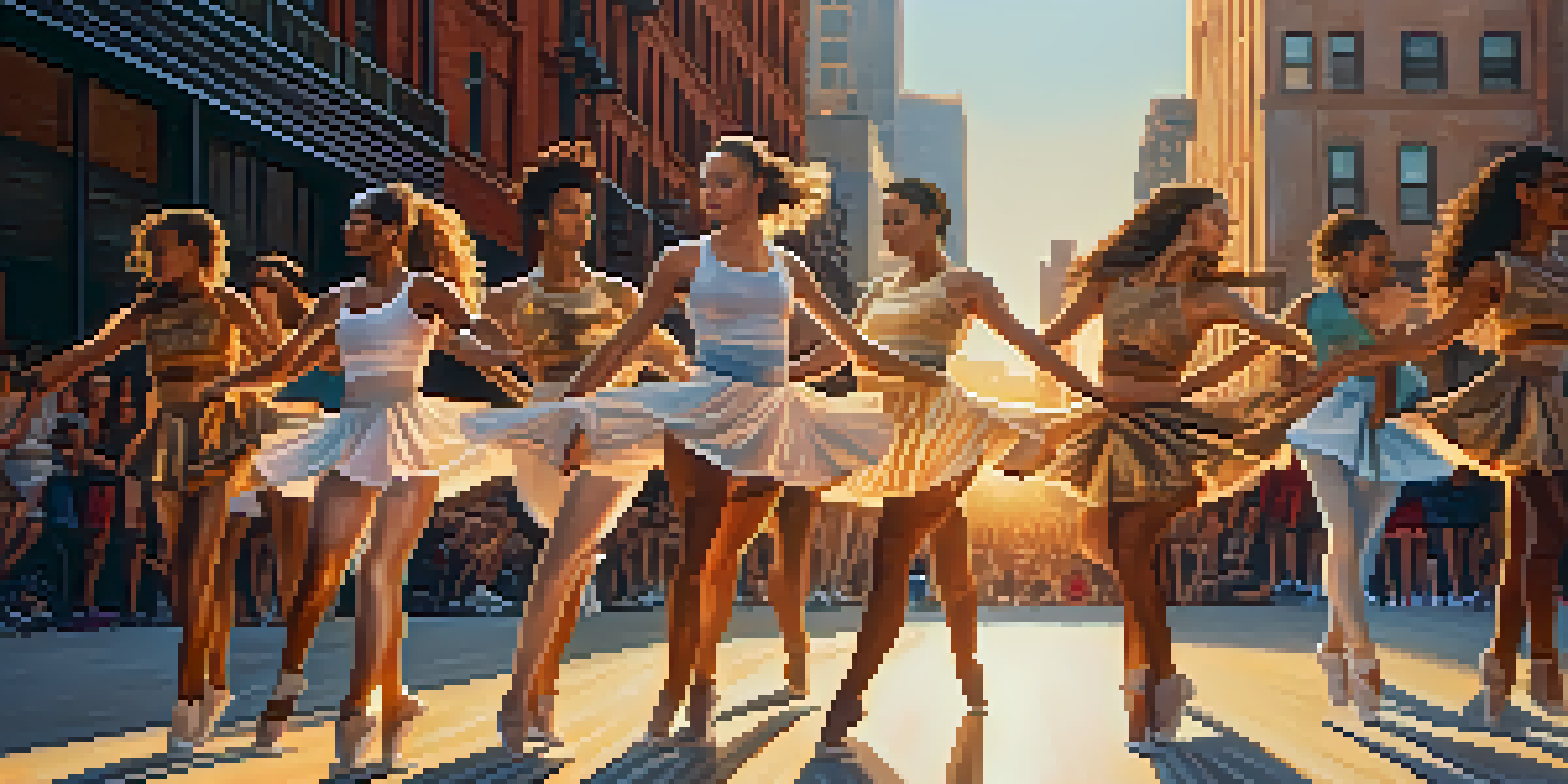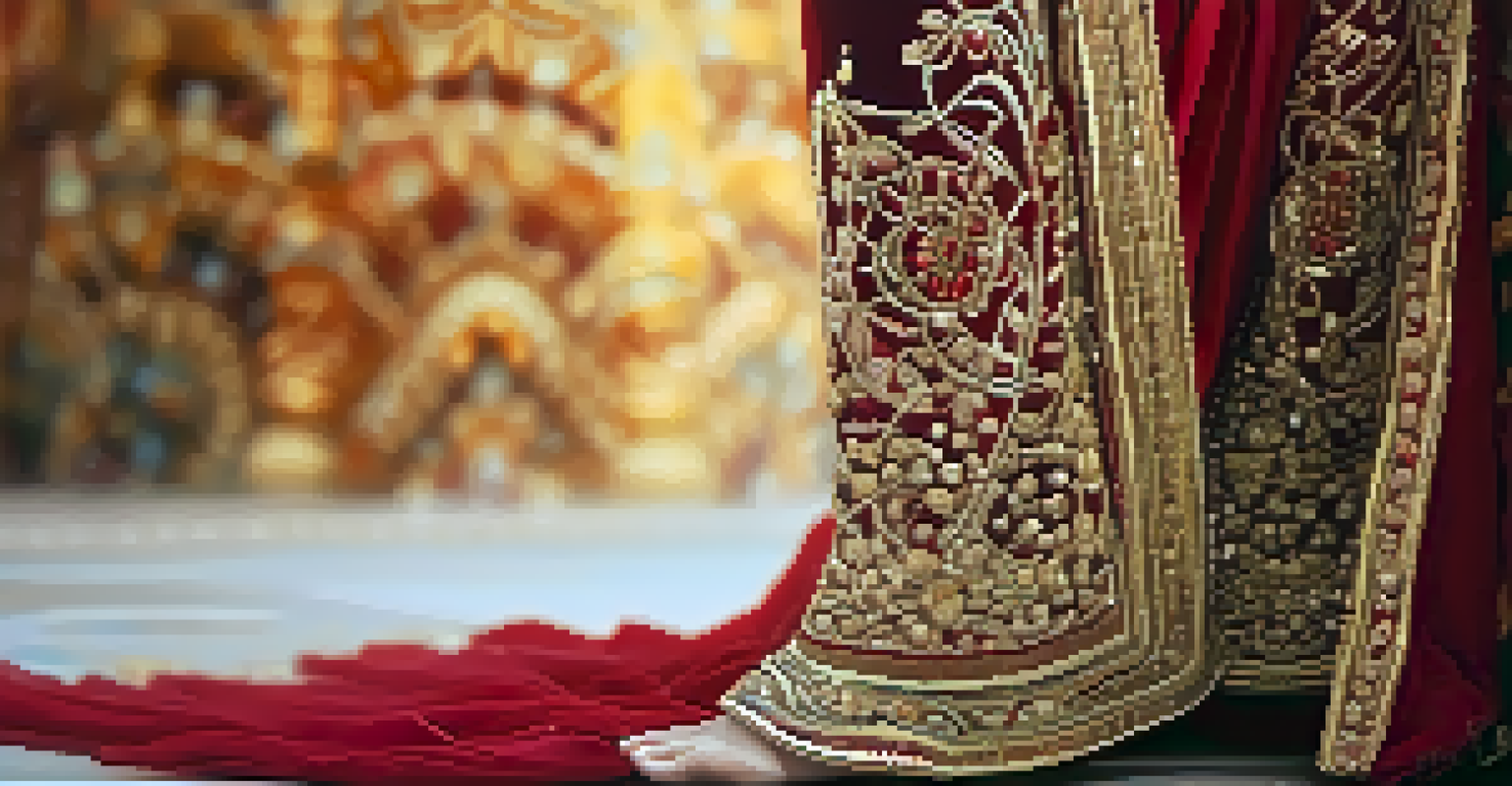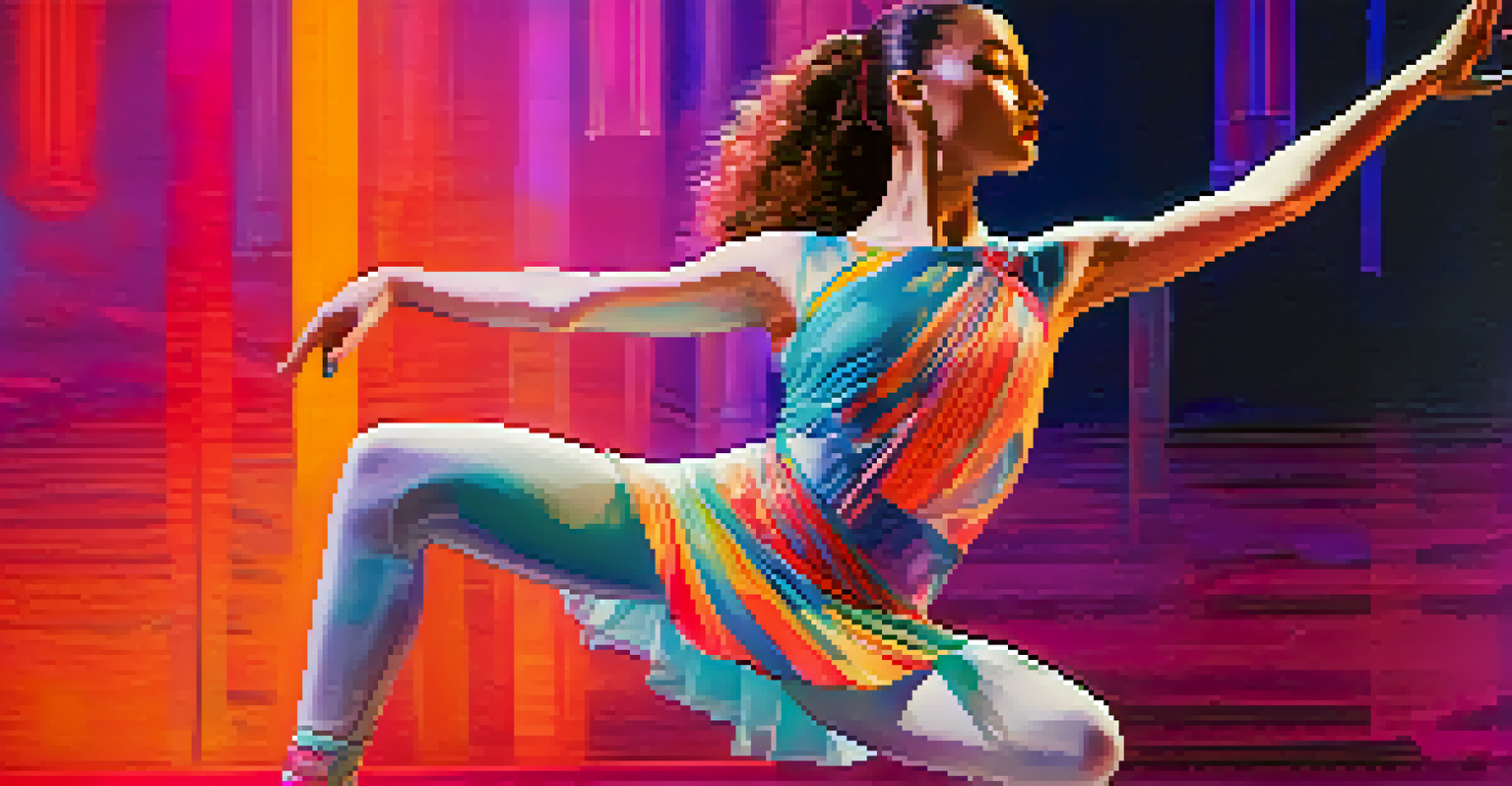The Influence of Fashion Trends on Dance Costume Design

Understanding the Connection Between Fashion and Dance
Fashion and dance have always shared a symbiotic relationship. As trends in clothing evolve, so do the costumes that dancers wear, reflecting cultural and social changes. For instance, the flapper dresses of the 1920s embodied the spirit of liberation, just as contemporary streetwear influences hip-hop dance attire today.
Dance is the hidden language of the soul.
This connection goes beyond aesthetics; it also affects functionality. Dancers need costumes that allow for freedom of movement, and fashion designers often innovate to meet these needs while staying trendy. The right blend of style and practicality can elevate a performance, making it visually striking and comfortable.
In essence, dance costumes are not just garments but a canvas that showcases current fashion trends. When audiences see a performance, they are not only captivated by the choreography but also by how the costumes resonate with contemporary style, creating a holistic artistic experience.
Historical Influences of Fashion on Dance Costumes
Throughout history, various fashion movements have significantly influenced dance costumes. For example, the lavish costumes of the ballet during the Romantic era were characterized by their intricate designs and flowing fabrics. These costumes helped convey the emotions of the performance, marrying the visual aspect of fashion with the storytelling of dance.

As we moved into the 20th century, the rise of modern dance brought a shift towards more relaxed and functional attire. Costumes became simpler, focusing on the dancer's movements rather than elaborate embellishments. This evolution mirrored broader societal changes, including the push for gender equality in the arts.
Fashion and Dance: A Dynamic Duo
Fashion trends significantly influence dance costumes, creating a captivating blend of style and functionality.
Today, we see a blend of historical influences in contemporary dance costumes, with designers drawing inspiration from past eras while incorporating modern materials and techniques. This fusion creates a rich tapestry of dance fashion that honors tradition while embracing innovation.
Contemporary Fashion Trends Shaping Dance Costumes
In today's world, fashion trends such as athleisure and sustainability are making waves in dance costume design. Athleisure, which combines comfort and style, allows dancers to wear costumes that are not only fashionable but also practical for rigorous movement. This trend is particularly evident in styles seen in contemporary dance and fitness classes.
Fashion is the armor to survive the reality of everyday life.
Moreover, sustainability is becoming a crucial consideration for designers. As awareness grows about environmental issues, many costume designers are opting for eco-friendly materials and practices. This shift not only appeals to a socially conscious audience but also adds a layer of meaning to performances.
These trends reflect a broader cultural shift towards valuing comfort, versatility, and responsibility in fashion, which ultimately influences how dance costumes are created. The modern dancer is now a reflection of current societal values, showcasing a blend of style, functionality, and consciousness.
The Role of Technology in Costume Design
Technology plays an increasingly vital role in the design and production of dance costumes. Digital tools allow designers to experiment with patterns, colors, and fabrics in ways that were previously unimaginable. For example, 3D printing technology is now being used to create intricate costume pieces that can be tailored specifically to the dancer's movements.
Additionally, wearable technology is making its way into dance costumes, enhancing performances with lights and sound elements. This integration not only captivates audiences but also offers new ways for dancers to express themselves through their attire. Imagine a costume that changes color with the dancer's movements—it's a reality in today's creative landscape.
Tech Innovations Transform Costumes
Advancements in technology, like 3D printing and wearable tech, are revolutionizing dance costume design and performance.
As technology continues to advance, the possibilities for dance costume design are limitless. Designers are not just creating costumes; they are innovating the entire performance experience, merging art and science in exciting new ways.
Cultural Influences in Dance Costume Design
Cultural influences have always played a significant role in shaping dance costumes. Different dance styles often reflect the rich traditions of the cultures they originate from. For example, the vibrant colors and intricate patterns of Indian classical dance costumes tell stories rooted in mythology and heritage.
Moreover, as globalization connects diverse cultures, we see a fascinating blend of styles that enrich dance costumes. Dancers often incorporate elements from various traditions, creating a unique fusion that resonates with modern audiences. This blending not only honors cultural heritage but also promotes inclusivity in the dance community.
As a result, contemporary dance costumes can be a beautiful representation of cultural narratives. They serve as a bridge between the past and present, allowing performers to express their identities while celebrating the diversity of the art form.
The Impact of Social Media on Dance Costume Trends
Social media has dramatically transformed how dance costumes are designed and perceived. Platforms like Instagram and TikTok allow dancers to showcase their performances and costumes to a global audience. This exposure can quickly elevate certain styles or trends, making them popular overnight.
Furthermore, social media enables a more immediate feedback loop between designers and performers. Dancers can share their thoughts on costume functionality and aesthetics, allowing designers to adapt and innovate in real-time. This collaboration fosters a dynamic environment where trends are continuously evolving.
Cultural Fusion in Dance Fashion
Dance costumes today reflect a rich tapestry of cultural influences, celebrating diversity and inclusivity in the art form.
As a result, we see a faster-paced fashion cycle in dance costumes, where trends can rise and fall within a matter of weeks. The influence of social media is undeniable, as it democratizes fashion and allows for diverse voices and styles to emerge in the dance community.
Future Trends in Dance Costume Design
Looking ahead, the future of dance costume design is bound to be exciting and innovative. With the ongoing evolution of fashion trends, we can expect to see even more unconventional materials being used, such as smart fabrics that respond to the dancer's movements or environmental conditions. Imagine costumes that change color based on the dancer's body temperature or mood!
Additionally, as sustainability continues to be a priority, we may see an increase in upcycled and ethically sourced materials in costume design. This shift will not only help the environment but will also inspire a new wave of creativity among designers, pushing them to think outside the box.

Ultimately, the intersection of fashion trends and dance costume design is a vibrant and ever-changing landscape. As both art forms continue to evolve, they will undoubtedly inspire each other, resulting in stunning visual expressions that captivate audiences for years to come.